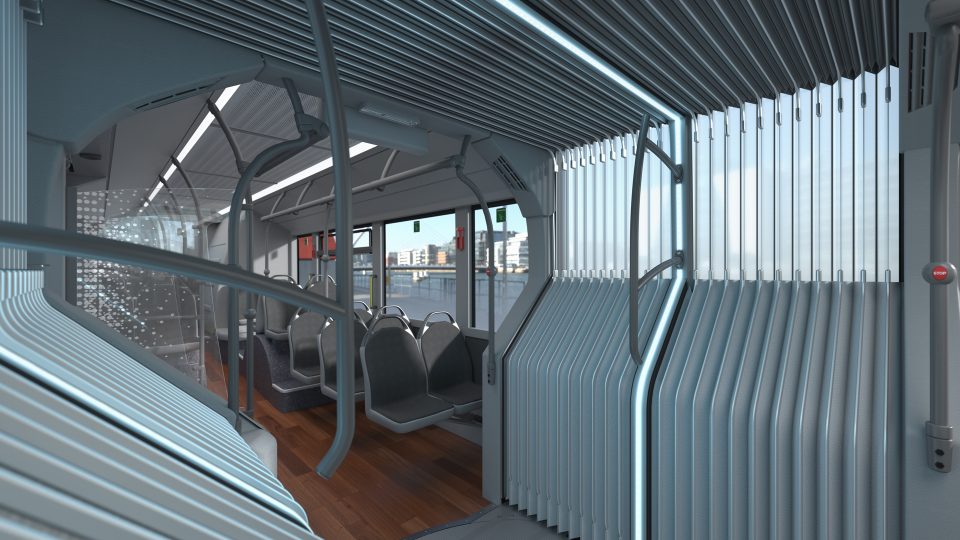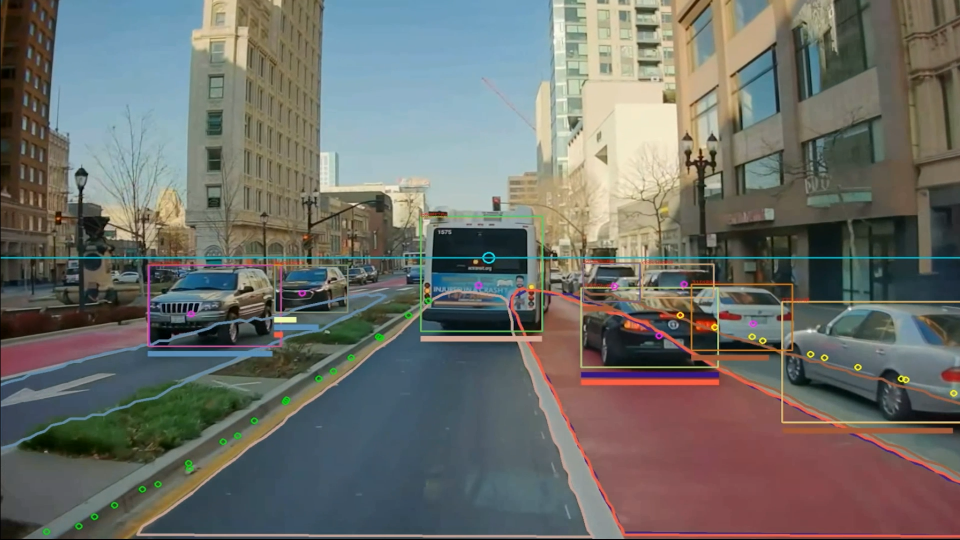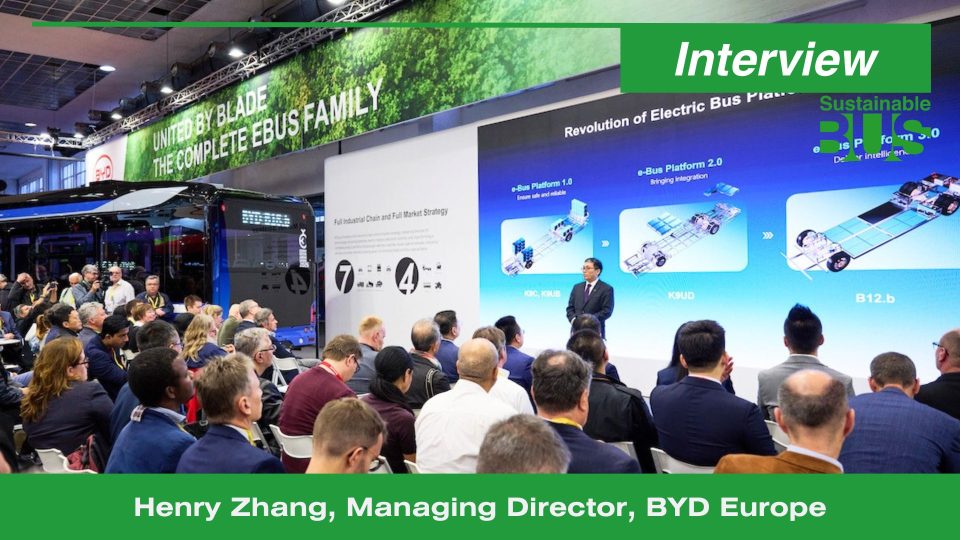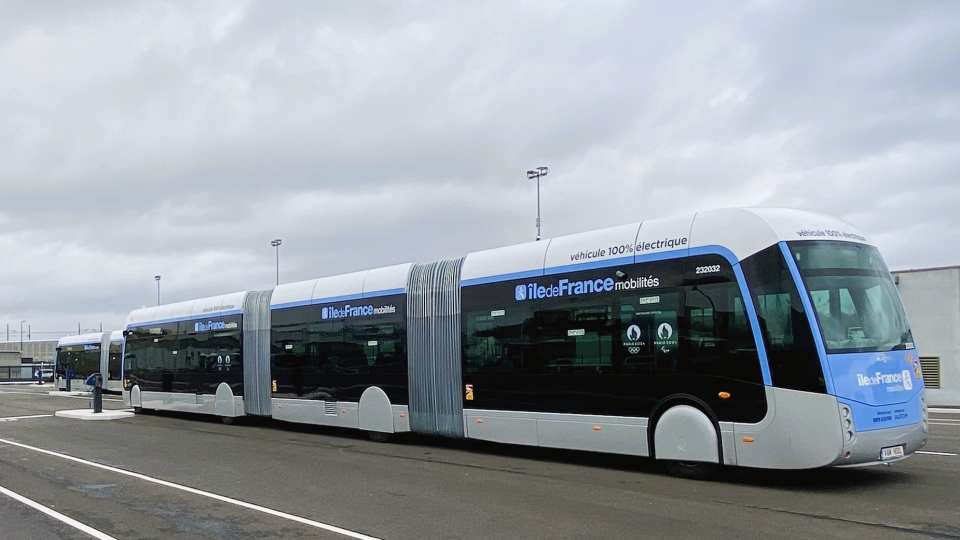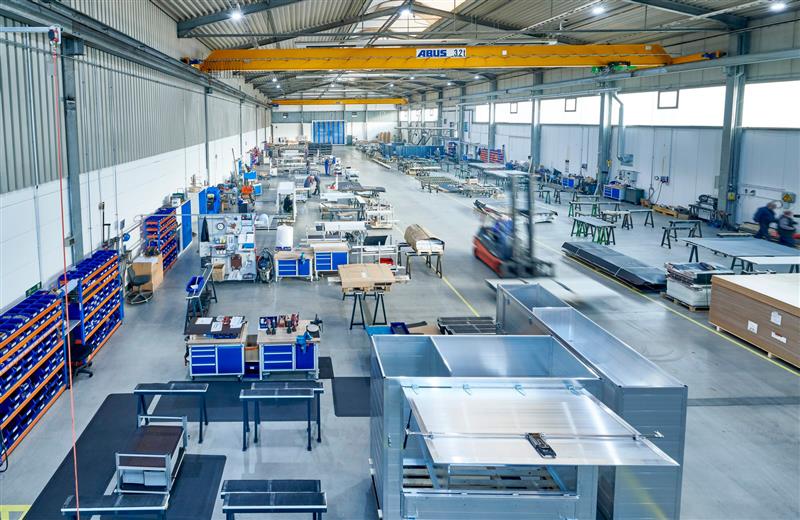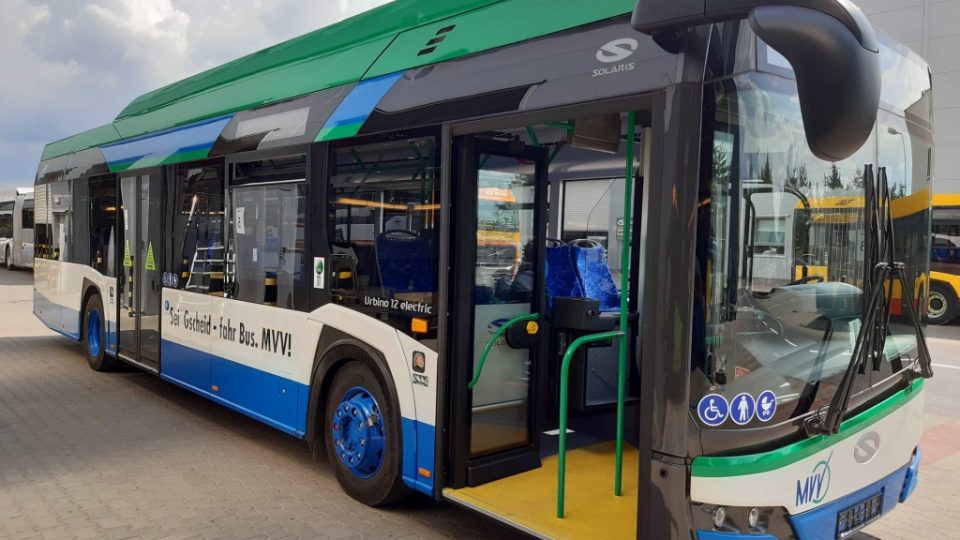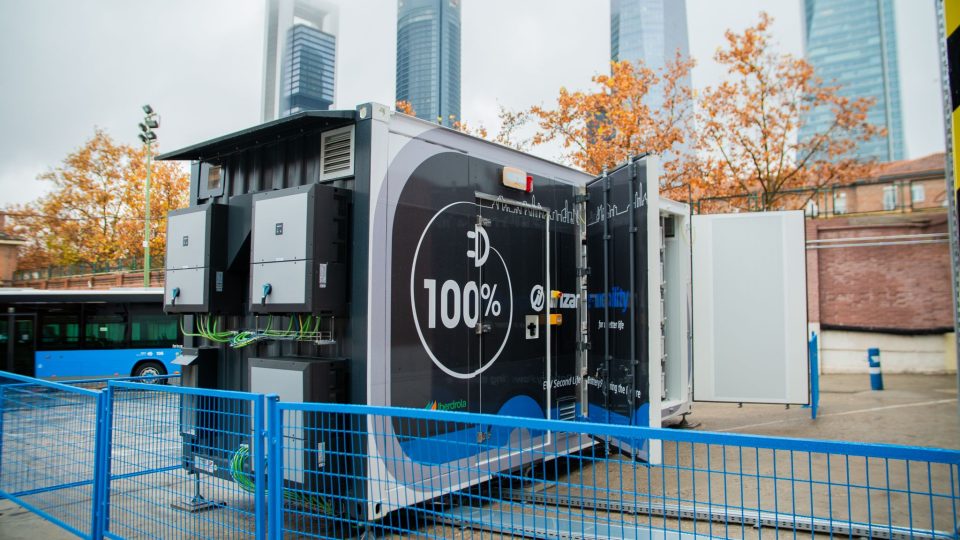Electreon: wireless charging on its way from demo to commercial deployments. Interview with Head of Global Strategy Charlie Levine
As public transport operators and cities face increasing pressure to decarbonize fleets, charging infrastructure remains one of the most complex barriers to large-scale electric vehicle deployment. In this interview, Charlie Levine, Global Strategy Manager at Electreon, outlines how the company’s wireless charging technology offers a flexible, hands-free solution—both at rest and in motion.
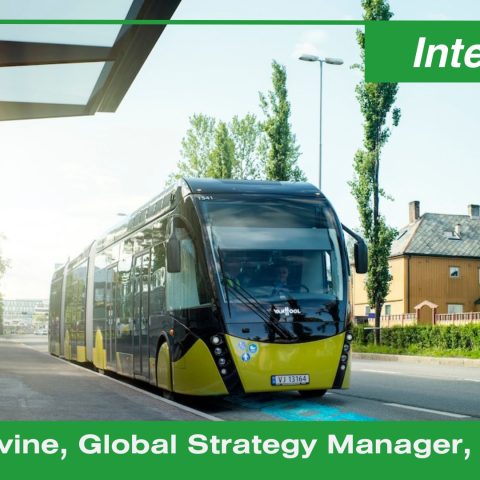
Sponsored by Electreon
As public transport operators and cities face increasing pressure to decarbonize fleets, charging infrastructure remains one of the most complex barriers to large-scale electric vehicle deployment. In this interview, Charlie Levine, Head of Global Strategy at Electreon, outlines how the company’s wireless charging technology offers a flexible, hands-free solution—both at rest and in motion.
From embedded coils in roadways to automated depot charging pads, Electreon’s system supports continuous vehicle operation without the need for oversized batteries or extensive grid upgrades. Levine discusses the benefits of “opportunity charging,” the operational lessons learned from large-scale deployments such as the Electra Afikim depot in Israel, and how wireless charging is being integrated into Bus Rapid Transit systems and mixed-use urban fleets around the world.
She also touches on OEM partnerships, grid optimization, and the role wireless charging could play in enabling future autonomous transit networks.

In the near future, wireless charging will be a backbone of smart transit systems. Imagine a city where electric buses never stop to charge. Instead, they gain energy passively throughout the day—reducing downtime, eliminating range anxiety, and lowering grid stress.
Charlie Levine, Head of Global Strategy, Electreon
Battery sizes will shrink, vehicle weight and cost will drop, and autonomous fleets will become viable—no cables, no manual tasks, no errors. For operators, it’s less maintenance and greater efficiency. For cities, it’s cleaner air, more reliable service, and future-ready infrastructure.
Most importantly, this is a one-time investment. Install the wireless infrastructure once, and it will support both today’s e-fleets and the autonomous vehicles of tomorrow.
Charlie Levin, Electreon’s goal? “Removing charging as a barrier”
For those just discovering Electreon — what’s the company’s story, and how does your wireless charging work both in motion and at rest?
Electreon was founded with a clear mission: to accelerate the shift to electric mobility by removing charging as a barrier—starting with eliminating cables. Our wireless technology, embedded in roads or installed at key points, allows all types of EVs—including buses—to charge while driving, stopping, or parked at the depot.
Using electromagnetic induction, coils beneath the road transfer energy to receivers on the vehicle. It’s hands-free, invisible, and vehicle-agnostic—ideal for urban areas, depots, and varied parking layouts. The modular system reduces both upfront and long-term costs and supports today’s fleets and future autonomous vehicles.
Your team often mentions “Opportunity charging.” Why is that idea so central to your approach?
“Opportunity Charging” is our approach to smarter, more flexible charging.
Instead of relying only on long overnight depot sessions, Electreon’s system delivers small energy top-ups throughout the day—during stops, passenger loading, or even a quick lunch break. This enables continuous operation without disrupting schedules.
By spreading energy use across the day, the system reduces strain on the grid—especially during peak hours—and gives operators full flexibility over when, how much, and how long to charge.
This model also promotes battery health by avoiding deep discharges and fast charging, helping extend battery life and reduce the need for oversized packs. Most importantly, it eliminates range anxiety—ensuring buses always have enough energy to complete their routes without needing backup vehicles. With wireless charging available throughout the day, operations become more predictable, cost-effective, and comparable to traditional ICE fleets.
The value of wireless charging in public transport
Where does wireless charging offer the most value in public transit—BRTs, city buses, or depots?
For BRT systems, our in-motion charging turns each station into a charging point—enabling fleet growth without the need for additional infrastructure. It eliminates mid-day downtime and supports smaller, lighter batteries, improving efficiency and reducing costs.
City buses benefit from stationary wireless charging at high-frequency stops or layovers where plug-in options aren’t practical.
At depots, embedded wireless charging creates a fully automated experience—no cables, no human handling, no scheduling. Ideal for dense depots or mixed fleets, with low-power, distributed grid connections that avoid major electrical upgrades.
The system is modular and scalable—each charging point works independently, offering built-in redundancy and future-ready flexibility for growing electric fleets.
Let’s talk about the Electra Afikim bus depot project in Israel. What lessons came from running wireless charging across a full electric bus fleet?
That project demonstrated what wireless charging can deliver at scale. Electreon’s system, deployed across eight Management Units and supporting up to 32 buses, achieved 99% operational uptime, over 90% energy transfer efficiency, and 92% of buses starting the day with more than 90% charge.
Daytime charging added 4 MWh/month—enabling 100 extra operational hours and cutting standby bus use to near zero. Peak overnight demand was reduced by 48%, slashing infrastructure and energy costs.
With real-time monitoring and a fully hands-free setup, operators gain full control—no cables, no reliance on drivers. The system is now expanding to the Ovnat Terminal, raising daytime wireless charging to 12%, adding 12,000 km per month, improving grid balance, and enabling reliable, scalable EV operations.

Charlie Levin: the benefits of an invisible system…
Cities often face space, grid, or range challenges when electrifying bus fleets. How does Electreon help overcome them?
Our system is purpose-built to solve these challenges. Firstly, it’s nearly invisible: no bulky hardware or above-ground units, just flush-mounted coils that preserve street space. This makes it ideal for curbside, terminal, and depot integration in dense cities.
Secondly, because the system spreads energy demand across multiple low-power points, it avoids peak loads and simplifies the required grid connection and configuration. This is especially helpful where grid capacity is limited or expensive to upgrade.
And finally, range becomes a non-issue. Buses charge while in operation, which means they don’t need to carry oversized batteries. That reduces vehicle weight and cost and increases route flexibility.
The system works through electromagnetic induction: coils installed just beneath the road surface transfer energy to receivers mounted on the vehicle chassis. It’s entirely hands-free, invisible, and vehicle-agnostic. The same infrastructure supports a wide range of vehicle types and sizes—ideal for space-constrained urban environments and depots, and varied parking layouts and orientations. This modular design reduces both upfront and long-term infrastructure costs and is ready to support the fleets of today and the autonomous fleets of tomorrow.
Charlie Levine, Head of Global Strategy, Electreon
BRT systems are gaining traction as efficient, high-capacity solutions for urban mobility. How can Electreon’s wireless charging technology support their deployment and long-term scalability?
BRT systems are a perfect fit for dynamic wireless charging. Their fixed, predictable routes allow cities to embed charging coils at key points—supporting high-frequency service without disrupting operations.
In Trondheim, Norway, Electreon is proving how this model enables continuous service, even in harsh conditions like freezing winters and hilly terrain. These environments increase energy consumption and strain conventional charging systems. By placing wireless charging at strategic locations along the route, buses get energy where and when they need it—without leaving the route or extending layovers.
This approach also reduces reliance on high-power depot infrastructure. Distributed, low-power charging along the route makes the system modular, tamper-proof, and space-efficient—while cutting costs across batteries, infrastructure, and energy. Plus, it’s built for future autonomous fleets.
Electreon: moving from demo to commercial deployment
From Detroit to Tel Aviv to Norway—where is Electreon gaining the most traction, and what’s driving it?
We’re seeing traction in regions that combine political will with a practical need to solve electrification challenges. In the U.S., projects like Michigan Central Station are focused on innovation and public-private collaboration. In Israel, it’s about optimizing operations in dense cities. And in Norway, sustainability goals are tightly aligned with technology pilots that scale quickly.
What’s driving momentum is the ability to move from demonstration to commercial deployment. Cities and transit agencies aren’t just looking for future-proof tech—they want tech that works now and integrates with existing systems. Wireless charging, when done right, ticks those boxes.
What role do automakers play in wireless charging—and how is Electreon partnering with OEMs?
OEM collaboration is key. We work with manufacturers and integrators to equip vehicles with Electreon receivers—either in-factory or through retrofits. For example, our partnership with Toyota is focused on scaling production and reducing installation complexity.
Because our system is vehicle-agnostic, we’re able to support a wide range of fleets, from buses to last-mile vans. We’re also working with suppliers to standardize integration for easier adoption across the industry.
What might a fully wireless-powered bus network look like five or ten years from now?
In the near future, wireless charging will be a backbone of smart transit systems. Imagine a city where electric buses never stop to charge. Instead, they gain energy passively throughout the day—reducing downtime, eliminating range anxiety, and lowering grid stress.
Battery sizes will shrink, vehicle weight and cost will drop, and autonomous fleets will become viable—no cables, no manual tasks, no errors. For operators, it’s less maintenance and greater efficiency. For cities, it’s cleaner air, more reliable service, and future-ready infrastructure.
Most importantly, this is a one-time investment. Install the wireless infrastructure once, and it will support both today’s e-fleets and the autonomous vehicles of tomorrow.
Where can people see your technology in action today?
If you’re attending UITP in Hamburg this June, I’d love to invite you to my session titled Accelerating the E-Transition: Smart Charging Infrastructure and Depot Management, taking place on 16 June from 16:00 to 17:00 in Expo Session B (Hall A4). You can also visit the Electreon booth (Hall A2 – Stand: A2452) to meet the team and explore how wireless charging could benefit your fleet.
Beyond the event, we have commercial and pilot projects operating in the U.S., Europe, and Israel. These projects are open for visits by transit agencies, policymakers, and industry professionals. If you’re evaluating charging solutions, we’d be happy to show you the system in action.

